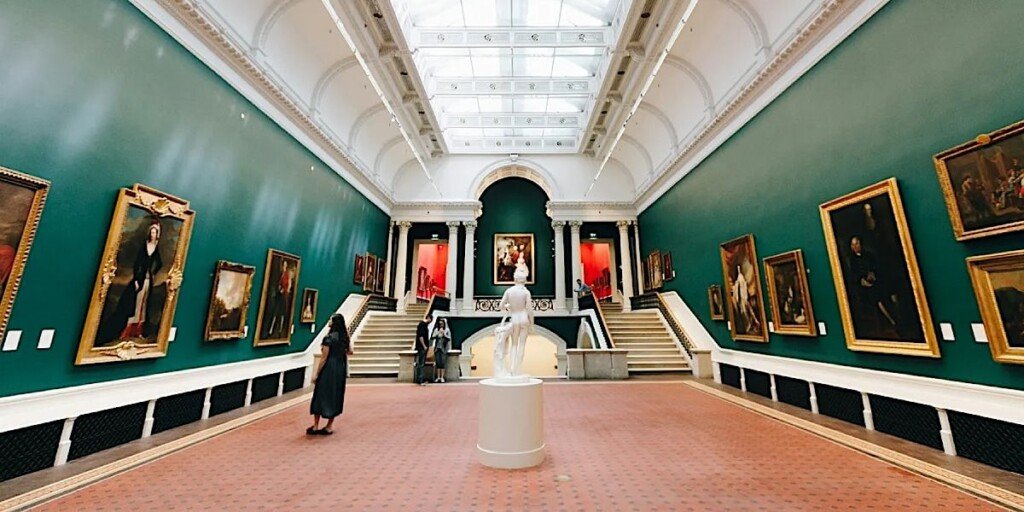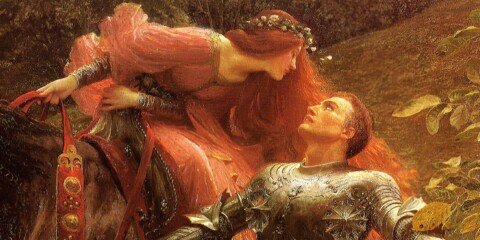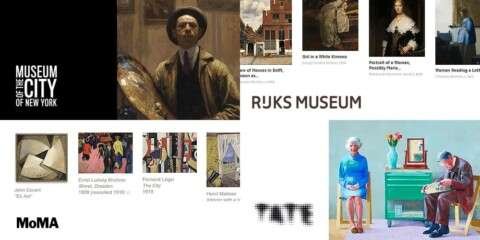Photo by Juliet Furst
The longest-running installation in the world, stolen masterpieces, the origins of hidden pigments, record-breaking auctions, and more. Catch the best of art history through the unforgettable ‘mosts’ and facts. This is a reading for everyone, whether you have five minutes or fifty: interesting things abound in art. These short art stories are worth reading for anyone who loves art and enjoys a good story.
The Longest-Running Art Installation — The Dream House
Sometimes, art itself is not made to be placed on the wall. It is built to surround and continue for an indefinite period. The Dream House is an art installation. It can rightly claim the title of the longest-running art installation in the world. This minimalist work began in the 1960s. It was in a loft by minimalist composer La Monte Young and multimedia artist Marian Zazeela in Manhattan. The original design was created in 1966. It then evolved into an expanding sine-wave and light environment. The project was first publicly displayed in Munich in 1969.

Ever since, it has continued to be shown in many different places. Some examples include Munich, Stockholm, Kassel, and Cologne. It was even at the Metropolitan Museum of Art in 1971. From 1979 to 1985, it ran for six years at a Dia-commissioned Harrison Street site. Since 1993, where it has continued to show its most extended presentation, the Tribeca loft above 275 Church Street.
Visitors step into a meditative, cross-sensory world. This world features Young’s sustained microtonal drones, often generated in real time. It also includes Zazeela’s magenta-hued light sculptures. The experience blends sight and sound into one perceptual entry that redefines time as an event that can be felt.
The Dream House isn’t merely an artwork; it is a room where one can entirely lose one’s sense of time.
One of The Most Famous Art Thefts In History — Caravaggio
Not every masterpiece ages peacefully. Some become legends. For over 350 years, Caravaggio’s “Nativity with Saint Francis and Saint Lawrence” was in the Oratory in Palermo. It served as a magnificent altarpiece there. It was rather illegally stolen on the night of 17–18 October 1969. Thieves cut it off from its frame, rolled it, and disappeared into the night. In fact, the FBI later included this theft in its top ten “unsolved art crimes”.

Sicilian Mafia involvement is widely suspected. Yet, contrary informants suggest different possibilities. They say it was actually buried and eaten by rats. It was destroyed in a barn. Alternatively, it has been sold to a dealer in Switzerland. None of these eventually led to recovery.
In 2015, Sky and Factum Arte produced a scientifically precise replica. This replica now stands in the place of the original altar. Modern artists, like Michelangelo Pistoletto and Vanessa Beecroft, have created reinterpretations of the space.
Forever lost, or hiding in plain sight is one of Caravaggio’s most iconic works.
Longest Painting in the World — Dubai, 2015
Some records are made with brushes, not stopwatches. On December 12, 2015, in Dubai, an initiative dubbed “I’m Different Just Like You” set a remarkable record. It created the world’s longest painting, measuring a jaw-dropping 10,850 meters (10.85 km). The campaign was a collaboration between Al Tayer Group and the Dubai Autism Centre. It has since received validation from Guinness World Records.


For the period of over 8 months, more than 20,000 participants contributed self-portraits. These participants included pupils aged 2 to 18, teachers, parents, and volunteers. The portraits were joined together symbolizing solidarity and inclusiveness for individuals with autism.
A 10 km long artwork brought thousands of people together with one powerful message: everyone belongs.

Sculpture, Sugar and Scandal — Kara Walker
Sometimes, art is so potent that it refuses to be polite. In 2014, artist Kara Walker staged the installation “A Subtlety”. The Marvelous Sugar Baby was set up in the abandoned Brooklyn Domino Sugar Refinery. The installation featured a 75-foot-long sphinx covered with 80 tons of sugar. It was intended as a critique of racialized labor and exploitation in the sugar trade.

Yet the message took a backseat to the vulgarity of selfie-posing with the sphinx’s breasts and vulva. Visitors posed mockingly with the sphinx’s breasts and vulva. Walker anticipated this behavior. She documented it in her film An Audience. Her work exposes voyeurism and cultural indifference as part of the art itself.
Whether sugar-coated or not, Walker’s art never fails to amaze.
Sketches to $110 Million — Claude Monet
All greatness starts from somewhere-sometimes it starts with caricatures. Before he became the father of Impressionism, Claude Monet was a caricaturist as a teenage in Le Havre. Around the age of 15, he used to sell brilliant lively caricatures for 10 to 20 francs each. These early works funded his art studies and drew the attention of landscape painter Eugène Boudin.

Fast forward on the 14th of May, 2019: Monet’s Meules (1890) sold for $110.7 million at Sotheby’s New York-extending a record for Impressionist art.
A teenager’s caricature paved the way through the history’s most valuable haystack.
A Flaming No — Vincent van Gogh
For Van Gogh, love and madness walked hand in hand. In summer 1881, Van Gogh met his cousin Cornelia “Kee” Vos-Stricker. She was a widow. He became madly and hopelessly in love with her. She gave a firm, heartbreaking “No, nay, never” to his proposal. Van Gogh dramatically held his hand over a lamp’s flame. He did this to prove that one’s love can go to such extremes.

Her father forbade contact, which shattered Vincent. By Christmas, he was arguing with his father. He left his home and never returned to the same devout path he had followed. Instead, he immersed himself completely in art.
This is how one of the greatest artists in history happened-the point of beautiful romantic and spiritual collapse.
The Only Signature — Michelangelo
Michelangelo signed only one work in his whole life just because someone tried to take credit for it. His Pietà (1498–99) in St. Peters Basilica was wrongly attributed to another artist. It prompted Michelangelo to sneak in and carve:
“MICHAEL·ANGELUS·BONAROTUS·FLORENT·FACIEBAT”

The Latin inscription means “Michelangelo Buonarroti the Florentine was making this.” Later, he regretted the pride and vowed never to sign another work. The fact that he used the imperfect tense “faciebat” shows that humility-this was being made, not finished.
One signature, one lesson: greatness does not always crave credit.

The Perfectionist Who Wouldn’t Stop — George Inness
George Innes painted his canvases in such a manner that they appeared unfinished, as in his mind they were unfinished.
Inness was famous for his atmospheric landscapes. The spiritual tones of his painting were well celebrated. He would often repurchase his landscapes to correct them. These corrections involve a change from cows to rocks. Alternatively, they simply include a moon painted into the very center of a given canvas. Some accounts even hold that he would sneak into galleries or houses and retouch his works.


By the account of his son and some contemporaries, galleries would ban him. Nevertheless, Inness saw his paintings as living, evolving entities that he would not part with. To him, the process of painting was never considered finished, but an ongoing prayer.
Blue Was Once Gold — Ultramarine and Vermeer
Before synthetic chemistry, blue was a treasure. Ultramarine pigment was mined from lapis lazuli in Afghanistan. It was so rare before 1826 that it cost more than gold. Only elitist commissions would be reserved for that pigment, mostly to depict the Virgin Mary.

Johannes Vermeer used ultramarine in such liberal quantity that some sources suggest he got into debt to acquire it. In 1826, Jean-Baptiste Guimet invented synthetic ultramarine, which dramatically brought prices down, in effect making the pigment accessible.
The deep blue in countless artworks? Once it represented fairly the color of wealth.
A Painted Illusion — Andrea Pozzo
Use a paintbrush to paint your church dome when there’s no money available to construct a dome.
That’s exactly what Jesuit renowned artist Andrea Pozzo did. The Church of Sant’ignazio in Rome ran out of cash to build its dome. Instead of constructing a real one, he painted it with trompe-l’oeil and quadratura. This created a stunning illusion of an absent coffered dome between 1685 and 1688.

From the ground, the flat canvas looks like an actual architecture. Even today, it remains arguably one of the triumphs of Baroque illusionism.
Pozzo didn’t fake a dome. He redefined what a ceiling could be.
Factories for Art in China — Dafen Village
It’s not always true that art is one. In fact, it can sometimes be mass-manufactured.
In 1989, an artist and entrepreneur named Huang Jiang set up an oil painting workshop. This workshop was in a little village called Dafen, located not far from Shenzhen. It became a powerhouse, and by the mid-2000s, Dafen churned out almost 60% of the world’s oil paintings.

Many painters specialized in duplicating masterpieces from renowned artists like Van Gogh, Rembrandt, and Warhol. Sometimes, each artist painted only one part of the picture, for example the eyes. Production slowed due to the effects of the 2008 crisis. Still, Dafen has remained an important part of the global art industry.
Dafen blurred the line between artistic tradition and industrial scale.


The Man Who Didn’t Use a Ruler — Piet Mondrian
Precision doesn’t always need measurement. Piet Mondrian was born “Pieter Cornelis Mondriaan”. In 1911, he dropped the last “a” from his surname. This change announced his separation from Dutch tradition. It marked his entrance into French modernism.

Nevertheless, he had a distinctive geometric style. He never used a ruler. He drew his grids freehand. He worked on them over months to achieve his vision. He sought universal harmony through the balance and simplicity of form.
The sharpest lines of Mondrian were conceived from intuitive thought and not by instruments.
Michael Jackson’s Dangerous — Mark Ryden
Even album covers can be masterpieces. Michael Jackson personally commissioned Mark Ryden to paint the cover for his 1991 album Dangerous. Ryden is known for pop surrealism. He crafted a richly symbolic scene inspired by circus posters. It features Jackson’s masked face, animals, and layered iconography.

It took over six months, during which he painted it traditionally in acrylic on panel. Don’t worry that “Dangerous” has not won a Grammy for design. The artwork is still exhibited in some of the best galleries. These include the National Portrait Gallery in the UK.
Thus, Ryden turned pop into portraiture, making visible the music history.
How Long Does One Really Look At Art?
You be surprised to find out how fast we walk past masterpieces. According to a study done in 2001 at the Met Museum, visitors spend on average about 27.2 seconds looking at each artwork, with a median of only 17 seconds. Studies done later found similar numbers.

This contradicts earlier assumptions about how people engage with art in museums. It highlights a challenge faced by curators. They must grab attention quickly and reward those who stay longer.
Most museum moments are over in 30 seconds. Art requires us to slow down.
Final Reflection
Art history is akin to any mere timeline of events. It is a kaleidoscope of obsession, invention, theft, devotion, and change. These stories continually remind us that art is alive. It has the capacity to provoke. It is deeply human.
This journey through the “mosts” in art history inspire you. So, whether one read it all or skimmed just about every second word. Let it encourage you to look just a litt
Sources
The Longest-Running Art Installation
Wikipedia — Dream House (installation)
Mela Foundation — DHpressFY07
Mela Foundation — LY MZ JHC DH July 2024
One of The Most Famous Art Thefts In History
Wikipedia — Nativity with Saint Francis and Saint Lawrence
The Guardian — Restitution lost beauty stolen Caravaggio Nativity replica
Longest Painting in the World
Guinness World Records — Longest painting
Guinness World Records — World’s longest painting created in Dubai
The National News — New world record set in Dubai
Sculpture, Sugar and Scandal
Wikipedia — A Subtlety
Fjords Review — Kara Walker Subtlety review
Time — Kara Walker Subtlety exhibit video
Sketches to $110 Million
Sotheby’s — Record-breaking $110.7 million Monet
Sotheby’s — Monet’s Meules sells for $110.7 million
Wikipedia — Claude Monet
The Vintage News — Claude Monet caricature artist
A Flaming No
Wikipedia — Vincent van Gogh
Hellenicaworld — Vincent Willem Van Gogh
The Only Signature
Wikipedia — Pietà (Michelangelo)
Paideia Institute — Michelangelo’s signature imperfection
The Perfectionist Who Wouldn’t Stop
Medfield Historical Society — A son’s recollections: George Inness
Time Archive — Arts Inness
Reddit r/ArtHistory — Artist banned for editing own work
Blue Was Once Gold
Wikipedia — Ultramarine
Wikipedia — Jean-Baptiste Guimet
A Painted Illusion
Romeing — Sant’Ignazio Church, Rome
Wikipedia — Andrea Pozzo
Factories for Art in China
Wikipedia — Dafen Village
Artsy — Village producing 60% of world’s paintings
Al Jazeera — Dafen oil painting village: the world’s art factory
The Man Who Didn’t Use a Ruler
Artsper Blog — 10 things to know about Piet Mondrian
Allpainters.org — Piet Mondrian
Michael Jackson’s Carnival
Wikipedia — Dangerous (Michael Jackson album)
Art of Design Online — Dangerous
Hi-Fructose — Mark Ryden revisits cover
How Long Does One Really Look At Art?
PMC — Museum viewing time study
ResearchGate — Where does one look when viewing artwork in a museum
ResearchGate — Short but meaningful visitors’ experiences





